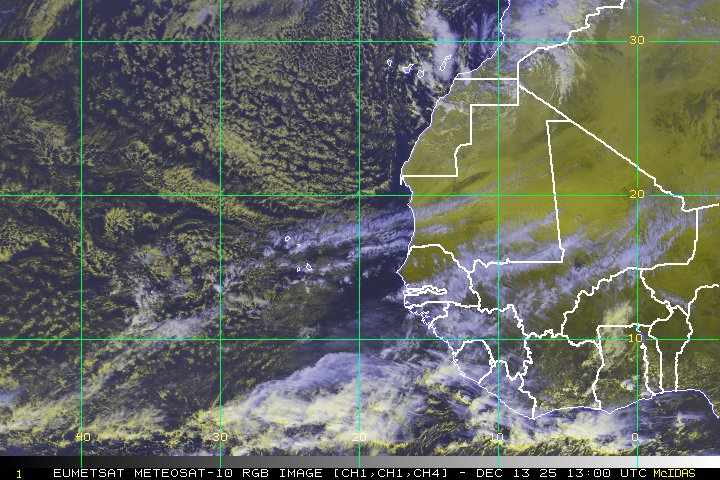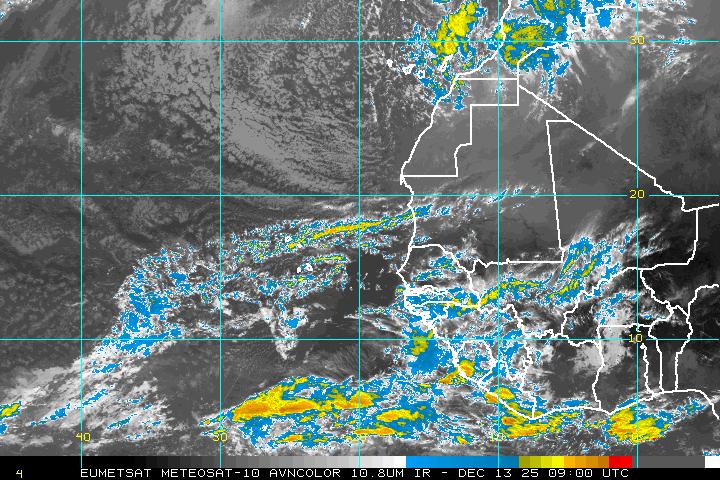And the tropics continue to remain active. Last week saw the development of Hurricane Gordon (now post-tropical) and Tropical Storm Helene (dissipated inland). To replace these three storms, we have three new threads to investigate, with particular attention being payed to the system in the middle (Invest 94L). Lets get right down to the nitty gritty details.
Invest 94L
Invest 94L has already been with us for a few days. As a rather potent wave emerging off of Africa, a lot of the guidance developed the system right away, and also took it significantly poleward over the first five days of its expected life. However, this forecast has not panned out, mainly due to the vast majority of models not accounting for the impact of the Saharan Air Layer (SAL) which has both kept the mid-level ridge stronger, forcing a faster westward track, as well as preventing rapid development of this disturbance. Over the past 6 hours, however, the system is starting to consolidate. Deep convection is finally developing close to the disturbance, and microwave imagery had previously shown the system had a well defined surface circulation. More recently, total precipitable water has increased over the system, despite a bit of dry air still trying to advect in from the western side. Shear continues to remain remarkably low over the system, with deep layer easterlies, which bodes well for future development. I agree with the NHC that this system has a near 100% chance of development over the next 48 hours, probably immediately later this morning.

GFS Forecast for Invest 94L. Animated above is the 925 hPa heights (black contours) 500 hPa heights (white contours) and 500 hPa vorticity (color shading).
With the development pretty much expected, where will this system track? At this point most of the guidance takes the system slightly north of due west over the northern Lesser Antilles and into the northern Caribbean Sea. While this seems to be a relatively confident solution, the models have currently handled the track of this disturbance poorly over the last few days. Once again, I think the track guidance might be a little too far north, especially if the system develops more than expected. Case in point, look at the 00z GFS (above). Note that the 500 hPa low center is significantly further south than the low-level center, which is displaced northward. This seems like an unlikely solution in the near term given that the system appears to becoming better vertically coupled. If the storm becomes vertically stacked (where the low and mid level low centers are aligned vertically) then the system will probably slide off further south, given the ENE/WSW orientation of the 500 hPa ridge. This should continue until the system makes it into the Eastern Caribbean. Beyond that period, the track of the system will be dictated on how much the 500 hPa ridge holds in place. The ECWMF keeps the ridge much stronger, which allows for 94L to move further west and stay in the Caribbean, while the GFS is further north, crossing both Hispaniola and Cuba. The track of Invest 94L will also strongly dictate intensity. Intensity guidance is split, with the global models (except for the ECMWF) showing little development, while the statistical models (LGEM, SHIPS) showing robust development over the next five days. I’d be inclined to go with the statistical guidance given the recent trends of a further south track possibly occurring as well improved organization. As always, I’ll keep you guys updated in the days to come if this become a major system.
Invest 95L
Invest 95L has been hanging around for the last day near the Mexican coastline. At several points, its pulsed up with convection big time. However, recon flying earlier today was unable to find a well defined enough circulation to classify this system as a tropical cyclone. At this time, it looks like the system is still poorly organized, although convection is increasing. In addition, westerly shear has increased over the system which might limit further development. On the plus side, the system is still over very warm water and high oceanic heat content. In the end, the storm might just be running out of time to develop if it doesn’t do so in the next 24 hours as the system is expect to slowly move east towards the Mexican Coastline. Intensity guidance suggets little development as well, so I am leaning against this system developing over the next 24-48 hours, and I am slightly under the NHC’s 30% probability for development.
Invest 96L
Finally we have Invest 96L. This system emerged off the African coast in the last 48 hours, and already has a broad circulation. Deep convection has been confined to the SW quadrant of the system, but remains vigorous. This system is currently under favorable upper level winds, and decently warm SSTs, which might be able to promote development in the short term. In the long-term, however, upper level winds may become more unfavorable for development. Trackwise, the system is expect to travel west-northwest to northwest over the next few days as the mid-level ridge weakens somewhat over the Central Atlantic.
And that wraps up another tropical weather outlook. Look for more updates in the days to come about Invest 94L which seem poised to become Isaac.































